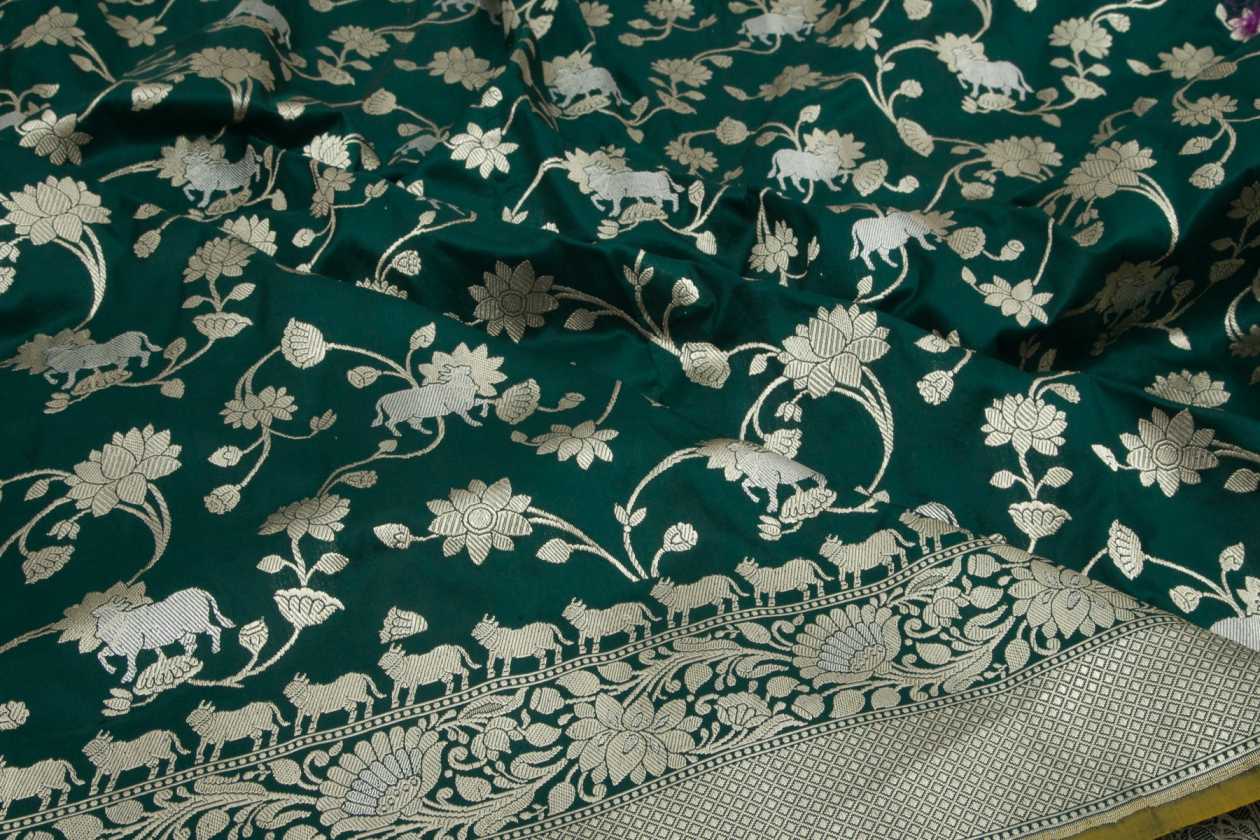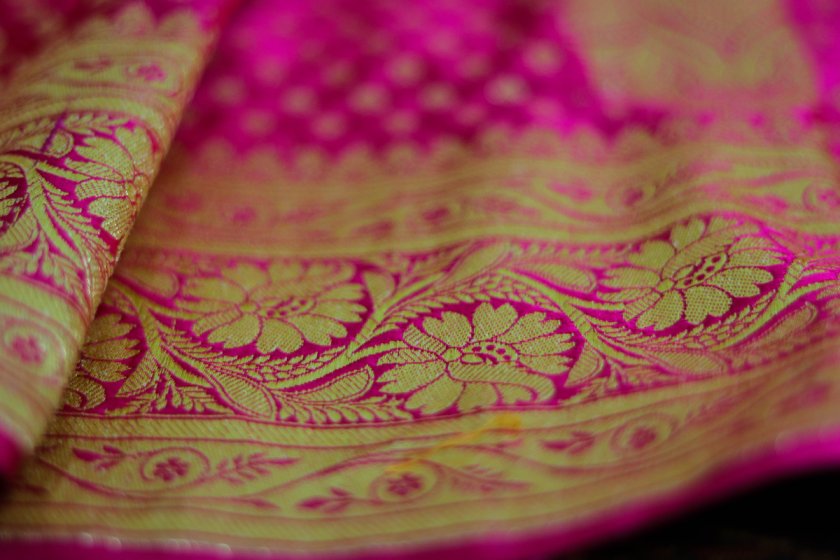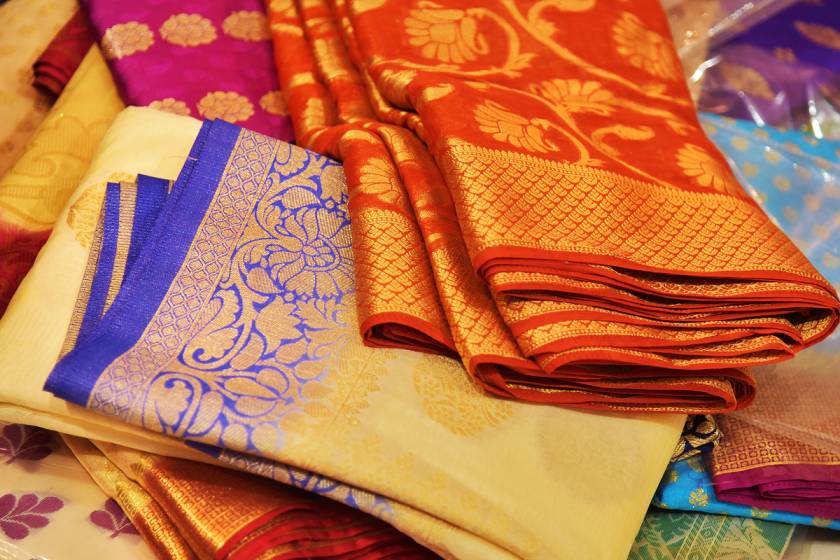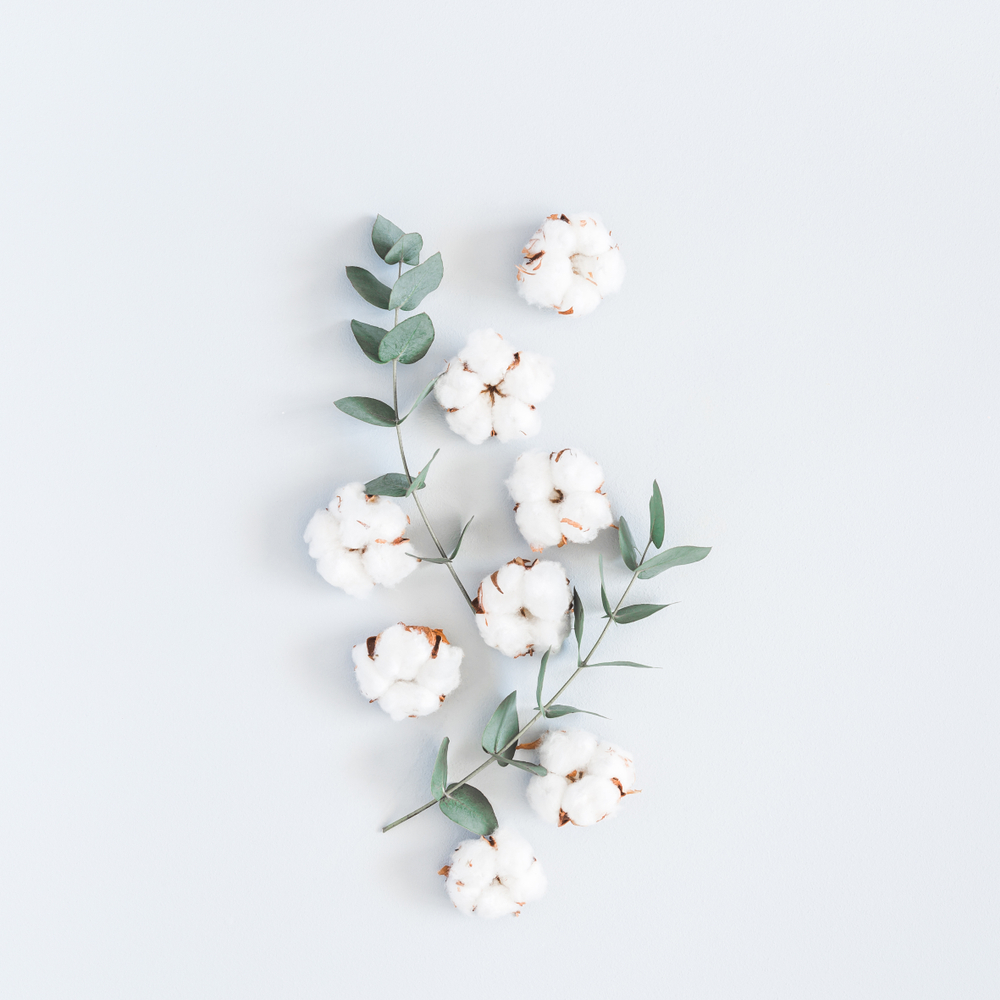How Benarasi Silk Fabric Is Made, Its History, and Its Uses



The Indian Fashion scene is never complete without a saree. And what better than a Benarasi saree?
The simplicity and elegance of the saree have long appealed to not just Indians but even international audiences. But the perfect saree is the one that speaks about India’s rich culture and history. Though sarees are popular in all fabrics, the famous Benarasi saree has its own charm.
Almost centuries-old, clothes made of the Benarasi fabric have been known to be passed down to generations. This elegant fabric was often associated with royalty because of its manufacturing process. Everything from spinning the thread to weaving is exclusively handmade by artists who are experts in the process. The delicate silk threads were often weaved with a mix of gold and silver, which made it exclusive to the elite only.
Even today, in the times where new and sustainable fabrics make their way into the market, Benarasi silk is still in high demand. No wedding is complete without a Benarasi saree. Women have time and again chosen this fabric for almost all traditional occasions. This shows that even today, fashion is all about carrying our culture and tradition forward.
With the Indian traditional fashion industry so synonymous with the Benarasi saree, let us take a dip into how the fabric is made, its rich history, and its various uses.
How is Benarasi silk fabric made?

In ancient times, the Benarasi silk fabric was made by weaving the highest quality silk with zari thread and alloys of silver and gold. Nowadays, the real gold and silver threads are replaced with gold and silver color threads to reduce the cost and make it affordable. However, the entire process of weaving the fabric is handmade. It takes approximately three highly skilled artisans to weave a Benarasi saree. They usually work around 15 to 20 days and 5600 wire threads to complete 1 saree. One artist is responsible for weaving the thread, while the other is in charge of dyeing the silk. The last one has to look into the bundle of silk, creating a power ring.
The artists first sketch the border and the design onto the graph paper. This is later used to make hundreds of punch cards to weave the design into the fabric. These punch cards are then laid out systematically so that the design on the artist’s mind comes exactly to life on the fabric. The color scheme is decided upon, and threads are used accordingly.
There are four varieties of Benarasi silk fabrics widely available. These are Organza, Georgette, Shattir, and Katan. Of these, the Katan Benarasi sarees are pure silk sarees. The Benarasi sarees for weddings are usually Katan sarees, which are customized and made exclusively.
History of Benarasi silk
Benarasi silk is a variety of silk that has its roots in the city of Varanasi, Uttar Pradesh. However, it was brought to India by the Mughals around 1000 BC. The fabric is so deeply woven into the customs and traditions of our country that it’s mentioned in the Mahabharata as well. There are several Buddhist scriptures also that describe the pure elegance and charm of the Benarasi fabric.
The modern-day Benarasi fabric is made by mixing Persian motifs with Indian design sensibilities. The brocade design on the fabric is mixed with Persian flower motifs. This results in an eye-catching design that not only lures Indians but foreigners as well. The Benarasi silk sarees are heavy on embroidery and designs, mixed with a wide spectrum of colors. This gives the saree a rich look, which is why they are chosen for special occasions like weddings and other traditional events.
Uses of Benarasi silk fabric

Traditional Indian fashion and the Benarasi silk fabric go hand in hand. With it being so popular, why restrict the use of the luxurious fabric to only sarees?
There are different varieties of Benarasi fabrics that are used to make elegant salwar kameez. The georgette variety of the Benarasi silk is often woven with crepe. This gives the fabric a soft fall, making it perfect for salwar kameez.
The Benarasi fabric is known for its sheen and elegance. This makes it a good choice for home furnishing. A lot of people opt for Benarasi brocade designs to liven up their interior space. The motifs and colors of the fabric are perfect for giving your home a charming, traditional feel.
You will find a variety of curtains, cushion covers, or table runners with Benarasi motifs. For a perfect Indian touch, you can opt for a standard color scheme and choose different items with Benarasi motifs around the house.
Benarasi laces are also highly used in the fashion industry. If an entire Benarasi saree or a salwar kameez is too much for you, you can always opt for a plain silk saree or a salwar kameez with a heavy Benarasi lace border.
Handloom Benarasi dupattas and shawls are also a great option if you love the weave but do not want to go overboard with it.
Conclusion
The Benarasi trend has been around for centuries with no intentions of leaving anytime soon. With its international appeal increasing now than ever before, fashion houses are recognizing this need and are including this traditional weave into their clothing lines. After all, a traditional Benarasi weave is something of a must in Indian wardrobes. So it is better to jump into the bandwagon and ride with the times.



















